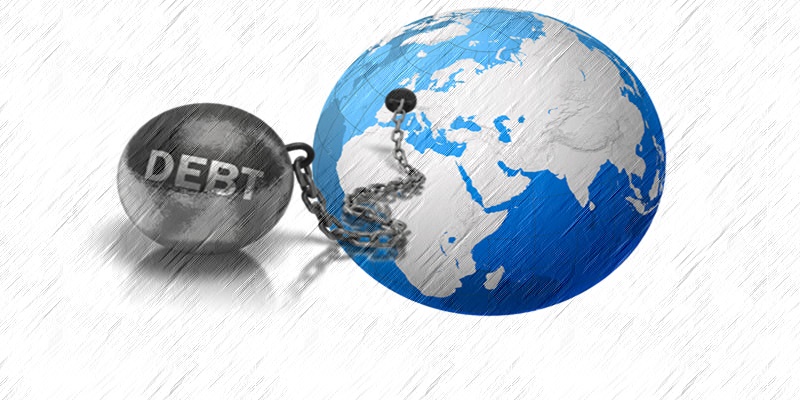Reforming the Global Debt Architecture

The sovereign-debt crisis is hitting Africa particularly hard and could lead to a lost decade of development. While the G20 has tried to ease the burden, its Common Framework has proven ineffective and needs to be fixed, and international institutions must make room at the policymaking table for African countries.
One in five people globally live in countries that are in debt distress or at risk of it. Two-thirds of low-income countries – most of them in Africa – fall into this category, while eight of the nine countries currently in debt distress are on the continent.
A confluence of factors has created this mounting debt crisis. With booming populations and massive infrastructure needs, coupled with the declining availability of official development assistance and concessional financing, African governments took advantage of historically low interest rates in the 2010s and borrowed heavily from international capital markets and China. Consequently, debt stocks more than doubled between 2010 and 2020.
But that debt has become a lot more expensive. Since 2020, the continent has been hit by a series of exogenous shocks. COVID-19, the Ukraine war, and worsening climate conditions have confronted many African governments with credit-rating downgrades, which rapidly increased their borrowing costs and made tapping international debt markets prohibitively expensive. Moreover, the US Federal Reserve’s massive interest-rate hikes since March 2022 have dealt a double whammy to African countries, whose loans are mostly denominated in dollars: their debt-service costs have gone up and their currencies’ dollar exchange rate has gone down. In 2024, African countries will spend around $74 billion on debt service, up from $17 billion in 2010. Two states – Ghana and Zambia – have already defaulted, while Chad and Ethiopia are in restructuring talks.
The implications of this crisis are clear: African countries face the specter of a lost decade of development. Kenya has been forced to withhold civil servants’ salaries to meet coupon payments. Other countries have reduced education and health-care financing. Debt service now averages 10.6% of GDP in Africa, compared to 6% for spending on health. In the wake of a default, increased borrowing costs inhibit a country’s ability to invest in much-needed infrastructure, much less the clean-energy transition.
Efforts to remedy this situation have been made more challenging by the increased complexity of the creditor landscape. The G20’s Debt Service Suspension Initiative (DSSI), which paused debt payments for eligible countries between May 2020 and December 2021, provided some temporary relief. The G20 Common Framework for Debt Treatments, a process through which low-income countries can request debt restructuring, was then established in November 2020 to complement the DSSI. While Chad, Zambia, and Ethiopia requested relief under the Common Framework in early 2021, Ethiopia still has not had its debt restructured. Chad concluded a tentative arrangement at the end of 2022, and Zambia reached a debt restructuring deal only last month. Given these delays, the Common Framework has not lived up to expectations. As one policymaker put it, “It is neither common nor a framework.”
In response to the Common Framework’s deficiencies, the International Monetary Fund, the World Bank, and the G20 Presidency (currently held by India) established the Global Sovereign Debt Roundtable. The IMF and the World Bank agreed to share macroeconomic projections and debt-sustainability analyses with creditors, who in turn agreed to find a solution to distributing the burden of debt reduction. China, which had previously refused to participate in debt restructuring unless multilateral development banks (MDBs) shared the burden alongside other creditors, agreed to MDBs increasing concessional lending rather than taking a haircut. The Roundtable seems to be paying off: progress on Ghana’s restructuring has unlocked a $3 billion IMF loan and has paved the way for a potential restructuring of a third of its debt.
But this is by no means a systemic solution. In line with UN Secretary-General António Guterres’s call for an “SDG Stimulus,” strong action must be taken in three areas before the next G20 Summit.
First, the G20 Common Framework must be fixed. Middle-income countries, which are also struggling with unsustainable debt, should be eligible to apply. Applicants should be given a transparent timeline, and their debt-service payments should be suspended immediately to create fiscal space. Ideally, the IMF would provide debtor countries with a line of financing for essential spending during restructuring negotiations. Moreover, clear comparability of debt-treatment formulae would minimize future technical disputes.
Second, the legal framework for public debt needs to be strengthened. Specifically, the inclusion of enhanced collective-action clauses in all future sovereign-debt contracts would address the coordination challenges posed by restructurings. New York State, whose laws govern more than half of sovereign-debt contracts with private creditors, is well-positioned to lead this process, which would prevent vulture funds from preying on distressed debtors. To address the challenges of cascading crises, state-contingent debt instruments that link a country’s debt-service payments to its capacity to pay should also be considered for future debt contracts. In particular, climate contingency clauses should be embedded in future debt contracts to defer debt repayment in case of major climate shocks or natural disasters.
Finally, international bodies should make room at the table for African countries and other developing economies. If the African Union had a permanent seat in the G20, for example, the continent could participate fully in discussions on G20 initiatives such as the Common Framework.
In the absence of better mechanisms for debt-distressed countries, more governments will struggle to service their obligations and will stop investing in the future. The resulting damage would have significant implications for the fight against climate change. Dealing with unsustainable debt burdens now will cost far less than dealing with unsustainable environmental burdens later.
By Hanan Morsy
Deputy Executive Secretary and Chief Economist of the United Nations Economic Commission for Africa (ECA).
